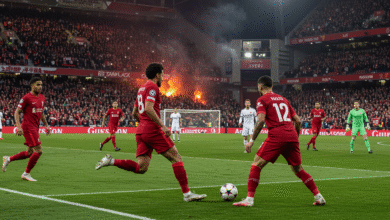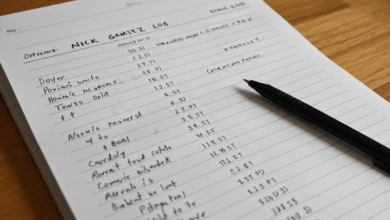CONCACAF Gold Cup Games: The Heartbeat of North and Central American Football

Introduction: The Tournament That Unites a Region
The CONCACAF Gold Cup is more than a regional tournament. It’s the pinnacle of football excellence in North America, Central America, and the Caribbean. Since its inception in 1991, the Gold Cup has served as the battleground where pride, passion, and power collide.You know about theglobespot, andaazdaily, openrendz and concacaf gold cup games also Buzzfeed.
Every two years, nations from across the continent step onto the pitch, not just for glory but for national identity. From the roaring fans in Estadio Azteca to the electric crowds in Miami, the Gold Cup unites countries under one banner—football.
Let’s take a deep dive into the history, structure, rivalries, stars, and unforgettable moments of the CONCACAF Gold Cup games.
History of the Gold Cup
Early Beginnings
The Gold Cup replaced the CONCACAF Championship in 1991. It became the official tournament for crowning the regional champion. The United States hosted the first edition, and since then, it has become a biannual football fiesta.
Mexico’s Early Dominance
Mexico won the first tournament and quickly established dominance. With a large talent pool, top-tier domestic league, and global experience, El Tri set the bar for everyone else.
Rise of the Underdogs
In later years, other nations began to challenge Mexico’s supremacy. The U.S. became a major force. Canada pulled off a shock tournament win in 2000. Honduras, Panama, Jamaica, and Costa Rica have also made deep runs, turning the Gold Cup into an unpredictable showdown.
Tournament Format: How the Gold Cup Works
Group Stage
The Gold Cup features 16 teams, divided into four groups of four. Each team plays three matches in the group stage. The top two teams from each group advance to the knockout round.
Knockout Phase
From the quarterfinals onward, it’s do or die. Extra time and penalties often decide tight encounters. This format has given fans unforgettable drama and edge-of-the-seat excitement.
Participating Nations: A Diverse Continent
North America
-
Mexico: Most successful nation with 12 titles
-
United States: Home powerhouse with consistent top finishes
-
Canada: Surprising champions in 2000 and dark horses ever since
Central America
-
Honduras: Known for physical play and strong qualifiers
-
Costa Rica: Technically gifted, always dangerous
-
Panama: Finalists in 2005, 2013, and 2023
-
El Salvador, Guatemala, Nicaragua: Strong regional pride
Caribbean
-
Jamaica: Reached back-to-back finals in 2015 and 2017
-
Trinidad and Tobago: Known for upsets and passionate fans
-
Haiti: Semifinalists in 2019
-
Curaçao, Martinique: Emerging forces with solid squads
Memorable Gold Cup Games
2000 Final: Canada Shocks the Continent
Canada’s 2-0 win over Colombia was historic. Nobody expected it. The Canadians played organized football, capitalized on chances, and walked away with their only Gold Cup to date.
2015 Semifinal: Jamaica Beats USA
Jamaica stunned the U.S. 2-1 in Atlanta. It was the first time a Caribbean nation beat the U.S. in the Gold Cup. Darren Mattocks and Giles Barnes scored, sparking island-wide celebrations.
2011 Final: Mexico vs USA Classic
This remains one of the most thrilling Gold Cup games ever. The U.S. took a 2-0 lead early. Mexico roared back with four unanswered goals, including a brilliant chip from Giovani dos Santos. Mexico won 4-2.
2023 Final: Mexico Redeems
After a poor 2021 showing, Mexico rebounded by beating Panama 1-0 in the 2023 final. Santiago Giménez scored the winner in the 88th minute, lifting spirits and the trophy.
Biggest Rivalries in the Gold Cup
Mexico vs USA: The Titans
This is the biggest rivalry in CONCACAF. Every Mexico vs USA match draws millions of viewers. The games are high in quality, aggression, and tension.
-
Mexico has 5 Gold Cup final wins against the U.S.
-
The U.S. beat Mexico in 2007 and 2021 Gold Cup finals
Central American Derbies
Honduras vs Costa Rica or Panama vs El Salvador bring out fierce energy. These teams know each other well and play with intense emotion.
Star Players Through the Years
Legends of the Gold Cup
-
Landon Donovan (USA) – All-time Gold Cup top scorer
-
Cuauhtémoc Blanco (Mexico) – Maestro in midfield
-
Carlos Pavón (Honduras) – Goal machine
-
Kemar Lawrence (Jamaica) – Set-piece specialist
-
Alphonso Davies (Canada) – Modern-day sensation
Rising Stars
-
Santiago Giménez (Mexico) – Clinical finisher
-
Jesús Ferreira (USA) – Hat-trick hero in 2023
-
Michael Murillo (Panama) – Consistent and versatile
-
Jonathan David (Canada) – Pacy and precise
Coaches Who Made a Difference
-
Bruce Arena (USA) – Gold Cup architect with multiple wins
-
Hugo Sánchez (Mexico) – Short tenure but inspired team culture
-
Gerardo Martino (Mexico) – Tactical genius
-
Winfried Schäfer (Jamaica) – Led team to 2015 final
-
Thomas Christiansen (Panama) – Transformed Panama’s game plan
Host Cities and Stadiums
The U.S. as the Main Host
The Gold Cup has mostly been held in the U.S. Cities like Los Angeles, Houston, Atlanta, and Chicago regularly host high-profile matches. The infrastructure, fan base, and commercial appeal make it a natural choice.
Other Co-Hosts
-
Canada and Mexico have occasionally co-hosted
-
In 2021, games were also held in the Caribbean for the first time
Fan Culture and Matchday Atmosphere
Mexican Fans: Loud and Loyal
Known for green jerseys, sombreros, and passionate chants. “Cielito Lindo” often echoes in stadiums when Mexico plays.
U.S. Fans: Diverse and Growing
American fans are increasingly passionate. The U.S. Outlaws supporter group has become a major presence.
Caribbean and Central American Fans
Every match is a celebration. Drums, flags, dancing, and music dominate. The fans bring a carnival atmosphere wherever they go.
VAR, Technology, and Refereeing
Video Assistant Refereeing (VAR) made its debut in the Gold Cup in recent editions. While it improved accuracy, it also brought controversy.
Refereeing remains a hot topic, especially in close games between rivals.
Broadcast and Media Coverage
Television and streaming have taken the Gold Cup global.
-
Telemundo, Univision – Spanish-language giants
-
Fox Sports, CBS Sports – English coverage
-
YouTube, ESPN+ – Streaming services
The global audience has grown. Millions now watch the Gold Cup from Asia, Europe, and Africa.
Economic Impact and Sponsorships
Gold Cup games generate millions in ticket sales, tourism, and merchandising. Sponsorship from brands like Nike, Coca-Cola, and Scotiabank fuels the tournament’s expansion.
Cities see a surge in hotel bookings, flights, and local spending during match weeks.
Gold Cup Trivia
-
Mexico has the most titles (12)
-
The U.S. has 7 titles
-
Landon Donovan scored 18 Gold Cup goals
-
The fastest goal was scored in 15 seconds by Clint Dempsey
-
Canada’s win in 2000 remains their only major tournament title
Impact on World Cup Qualification
While the Gold Cup isn’t a direct qualifier for the World Cup, it greatly influences rankings and momentum. Strong performances can boost FIFA rankings, which affect seedings in World Cup draws.
Future of the Gold Cup
Possible Expansion
There are talks about expanding the tournament to 20 teams. This would allow more Caribbean nations to participate.
Hosting Outside the U.S.
With rising interest in Central America and the Caribbean, CONCACAF may consider rotating hosts.
Cross-Federation Matches
Some editions have featured guest teams from Asia and South America. Qatar joined in 2021. More such entries could be seen to raise the competitive bar.
Conclusion: The Spirit of the Gold Cup
The CONCACAF Gold Cup games are a celebration of football, culture, and identity. Whether you’re from Kingston or Kansas City, San Pedro Sula or San Diego—this tournament brings you to your feet.
Every game is a chapter in the region’s footballing story. Every goal is a heartbeat of a nation.
As the tournament continues to grow, one thing remains certain—the Gold Cup is here to stay, and it’s more thrilling than ever.



